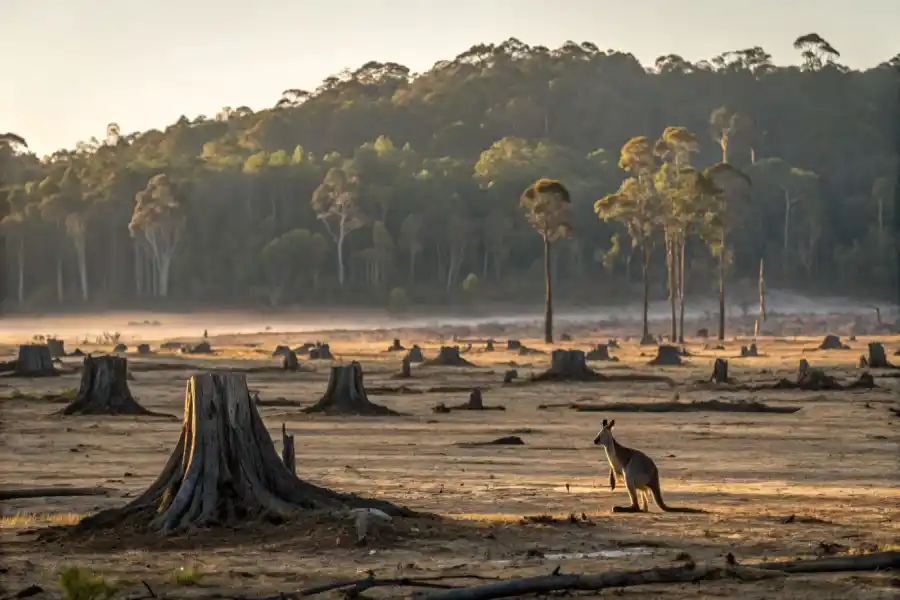Researchers from the University of Queensland have assessed the costs of protecting and restoring endangered species. Their conclusion is unequivocal: it would require spending 583 billion dollars per year for 30 years to reverse the damage caused by human activity. This astronomical figure highlights the economic impact of environmental degradation.

An insurmountable cost on a national scale
The study, published in Nature Ecology & Evolution, shows that the complete restoration of endangered species in Australia is financially unrealistic. The researchers estimate that the most degraded areas would require investments of up to 12,600 dollars per hectare.These high costs are explained by the need to combat invasive species, restore habitats, and manage introduced predators. Scientists emphasize that these actions, although essential, represent a considerable economic burden for the country.
More accessible local solutions
On a smaller scale, some measures are less costly yet very effective. For example, managing ecological fires and controlling predators like cats and foxes are relatively affordable interventions.These local actions could save many species without requiring exorbitant budgets. Researchers stress the importance of prioritizing these efforts to maximize ecological benefits while minimizing expenses.
A balance to find between economy and ecology
The authors of the study acknowledge that total restoration is impossible. They urge policymakers to find a balance between nature protection and other economic priorities. A pragmatic approach is essential to avoid negative impacts on the economy.They also suggest targeting areas where interventions are most cost-effective. This would allow for the protection of biodiversity without compromising the country's economic stability.
Benefits beyond biodiversity
Restoring natural habitats would have positive repercussions for agriculture and combating climate change. For instance, managing invasive species would reduce agricultural losses, while reforestation would help capture carbon.These actions could also create jobs, particularly in rural and Indigenous communities. Researchers see these projects as an opportunity to reconcile ecology and economic development.
A necessary awareness
This study highlights the magnitude of the issues related to biodiversity protection. It reminds us that the damage caused to the environment has a direct economic cost, often underestimated.Researchers hope that their work will help governments make informed decisions. They emphasize the urgency of taking action to prevent further irreversible losses.
To go further: What is ecological restoration?
Ecological restoration aims to restore degraded ecosystems so that they regain their natural functioning. This includes the reintroduction of species, the rehabilitation of habitats, and the management of threats such as invasive species.This practice is essential for preserving biodiversity and ecosystem services, such as water purification or climate regulation. It requires targeted interventions, often costly, but essential for environmental balance.
Ecological restoration is not limited to wild nature. It can also concern urban or agricultural areas, where it helps improve quality of life and productivity. Projects must be adapted to local specificities to maximize their effectiveness.
Finally, this approach often involves collaboration between scientists, governments, and local communities. It represents a long-term investment for future generations, but also a challenge to face against economic and social pressures.
What is megadiversity?
Megadiversity refers to the exceptional concentration of living species in certain countries, which host a large part of global biodiversity. These nations, numbering 17, possess a unique biological wealth, with many endemic species, meaning they are found nowhere else.Among these countries are Brazil, Australia, Madagascar, and Indonesia. They play a key role in preserving global biodiversity, as their territories host varied and often fragile ecosystems, such as tropical forests or coral reefs.
Megadiversity is an asset, but also a responsibility. These countries must face major challenges, such as deforestation, poaching, or climate change, which threaten their ecosystems. Protecting these areas is essential for the overall ecological balance.
Finally, megadiversity offers scientific and economic opportunities, such as the discovery of new species or the development of ecotourism. However, it requires sustainable management to preserve these natural riches for future generations.